Metamorphosis of Dominican amber
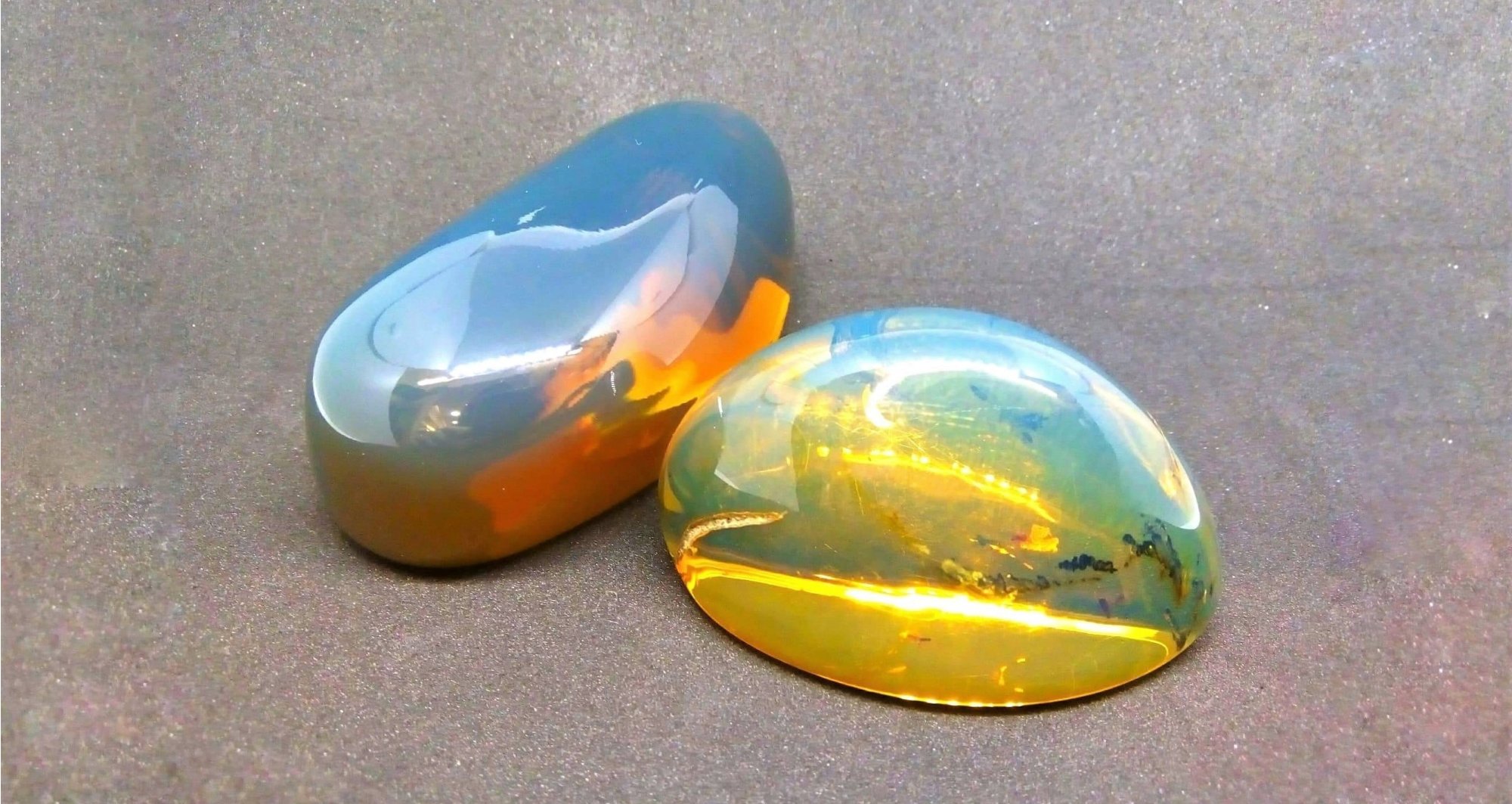
Metamorphosis of Dominican amber
Why is blue and green amber from the Caribbean called blue and green when it is actually yellow? No, it's not colour blindness. Nor is it a translation error. Dominican blue and green amber has earned its name rightfully. So what's the deal with it?
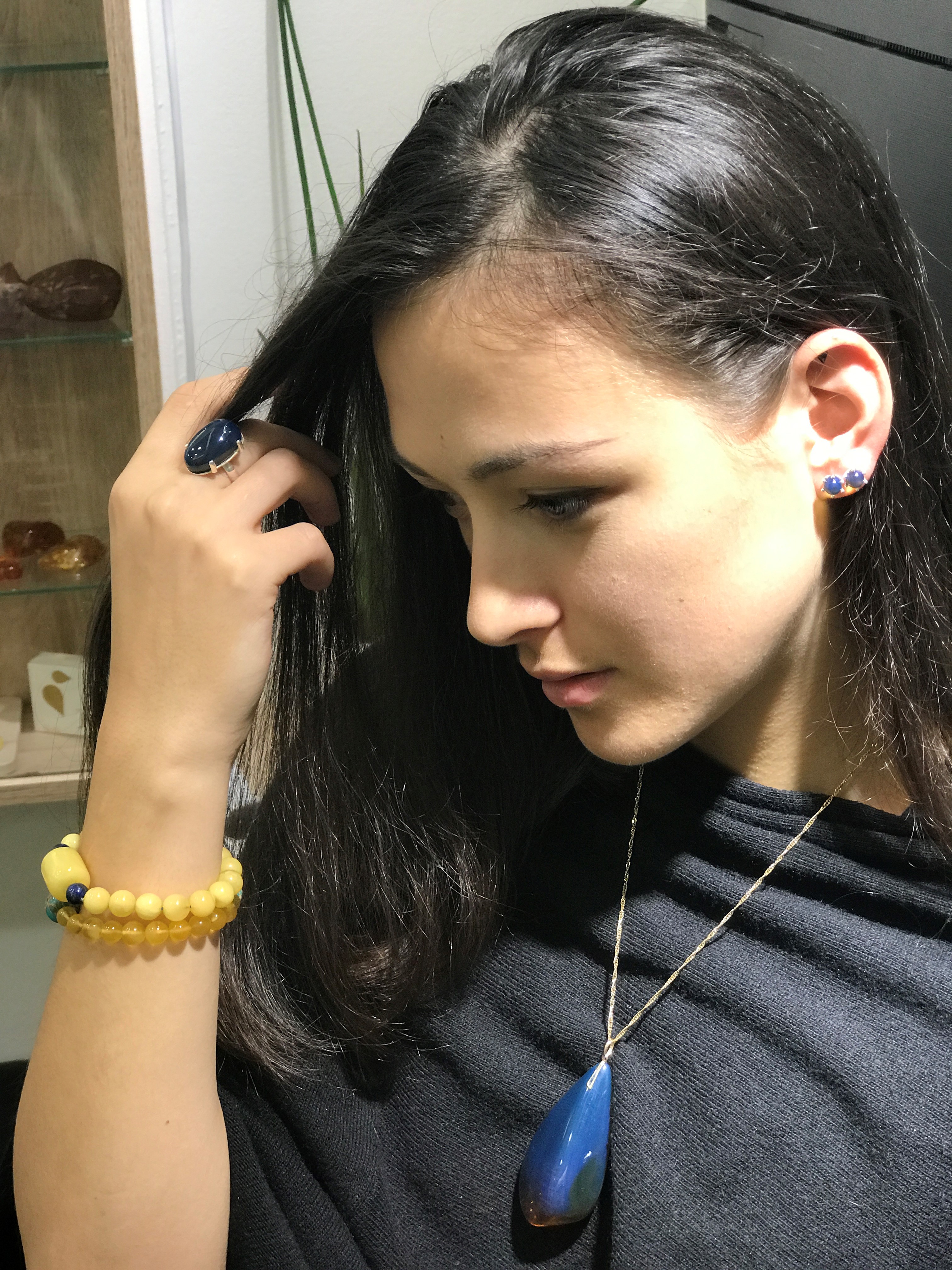
What is the origin of Dominican amber?
We could almost start like a fairy tale. Once upon a time, behind seven mountains and seven rivers, across distant seas and oceans, there was an island. Lush greenery, clear seas, tropical warmth... On this island strange trees grew. Their fruits looked like giant bean pods (maybe the fairy tale about Jack and the miracle bean is not entirely a fiction...). When the tree was attacked by a disease or injured, resin oozed out of the wound. And there was a lot of it! This substance coated the wound and healed the tree. When the tree later died, its resin was buried underground with it. In a few places, it didn't decompose as it normally does, but became petrified. There was no black magic or Medusa or anything like that. It was more like nature's alchemy. The right temperature, pressure, humidity, underground environment, etc.

Photo: Rough blue amber from the Dominican Republic - this one has already had its bark grind off so that you can see what it contains and work with it further

Photo: Raw green amber from the Dominican Republic
At that time, during the Oligocene and Miocene periods, the continents were slowly coming into their present position. As the Earth's plates shifted, it was common for an island to erupt into a volcano here and there. It spewed out lava, and where it flowed, it heated up. It didn't even leave the fossilised resin underground alone. It melted, but as the ground cooled, it turned back to stone. Another time, in another place, it happened that a fire burned the whole forest. Such a fire did not completely melt the amber underground, it was no match for the heat of the lava. However the amber underground warmed up and softened anyway. Then it fossilised again. And that's how the miracle happened. The heat, and who knows what else, awakened a mysterious power within it. (To make it sound more technical, it activated photosensitive substances.) Then the amber matured in the ground for tens of millions of years until it was discovered by humans. And because humans have always liked all kinds of coloured stones, glitter and jingles, they began to cut and polish these stones. What didn't happen! When they looked through it, the amber was yellow. Or maybe it was brown or reddish-brown. But when they put it on a dark surface and the sun shone on it, it suddenly changed colour. Some of the stones turned blue, others turned green. It seemed as if the stone changed completely. It was as if suddenly it wasn't transparent at all. From different angles, it looked a little different, but always had the same magical look.

Photo: For Dominican amber to change colour, it has to be polished, otherwise the reflection of the light rays will not be sufficient.
Why does Dominican amber change colour
I guess this is where our tale ends. Yes, we were talking about Hispaniola, the second largest island in the Caribbean Sea, which today is home to the Dominican Republic and its green and blue amber. To this day, scientists are still trying to find out what process caused its special optical properties. Melting by volcanic activity in blue amber or forest fire in green amber is just one theory. But what we do know is that green and blue Dominican amber contain photosensitive substances. Some scientists believe these are aromatic hydrocarbon compounds. These are activated when ultraviolet light hits the surface of amber, causing a phenomenon known as fluorescence. This means that amber reflects this ultraviolet light. This occurs at the surface of the amber or slightly below the surface if it is thick enough. The ultraviolet light rays do not penetrate through. The original colour of the amber does not change, but it turns blue (in the case of blue amber) or green (in the case of green amber) on the surface. Therefore, it will look as if the originally transparent amber has suddenly ceased to be transparent. When the amber is thick enough, this ultraviolet light can penetrate a little more deeply. This is best seen against a black background. The black colour does not reflect the light rays, so it enhances the fluorescence.

Photo: AAA-quality Dominican blue amber pendant on a white and black background - photographed under a spotlight daylight colour.
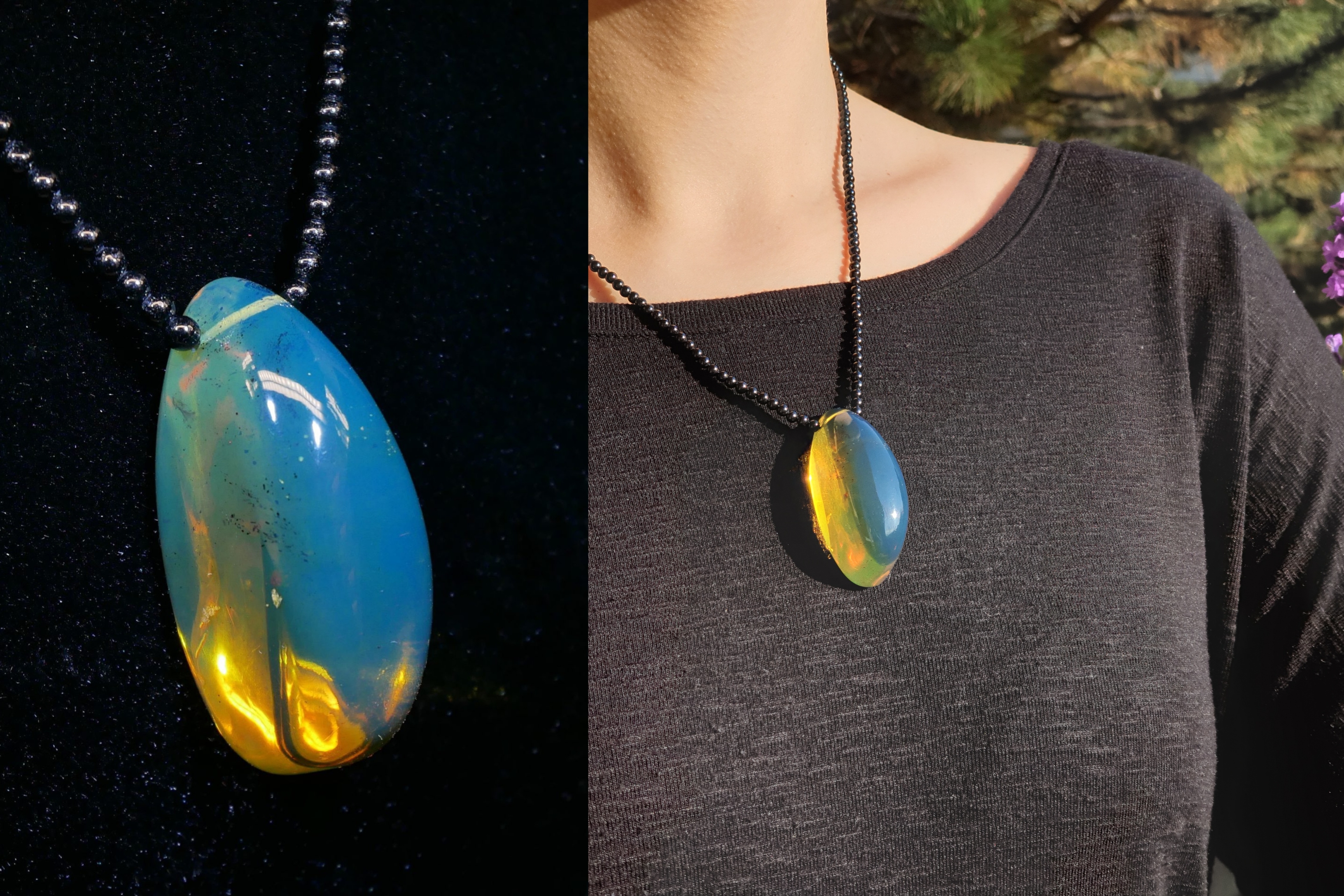
Photo: Dominican blue amber pendant photographed under a spot LED daylight light on the left side and under direct sunlight.
It is very rare to find pieces among Dominican amber whose body is greenish or reddish-purple even against a white background. However, even in this case, the fluorescence will show in sunlight and against a black background. If you get your hands on an amber that is bright green or blue even on a white background, and it is still the same shade of green or blue all the time, then it will probably be an imitation of amber or at best, dyed amber. Natural amber changes its colour in different light conditions.
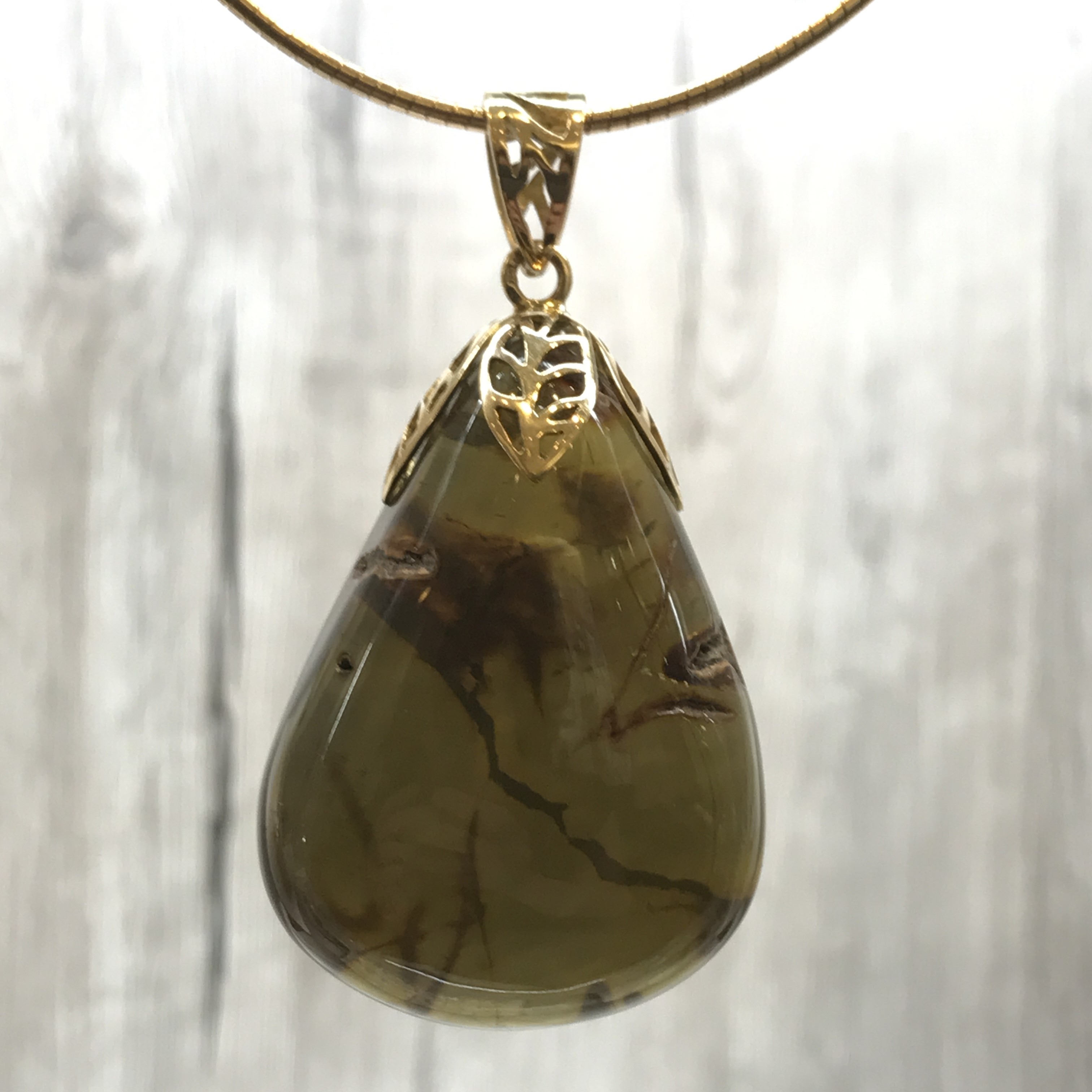
Photo: This pendant was made of Dominican green amber, whose primary colour was swamp green. Pieces like this are very rare.
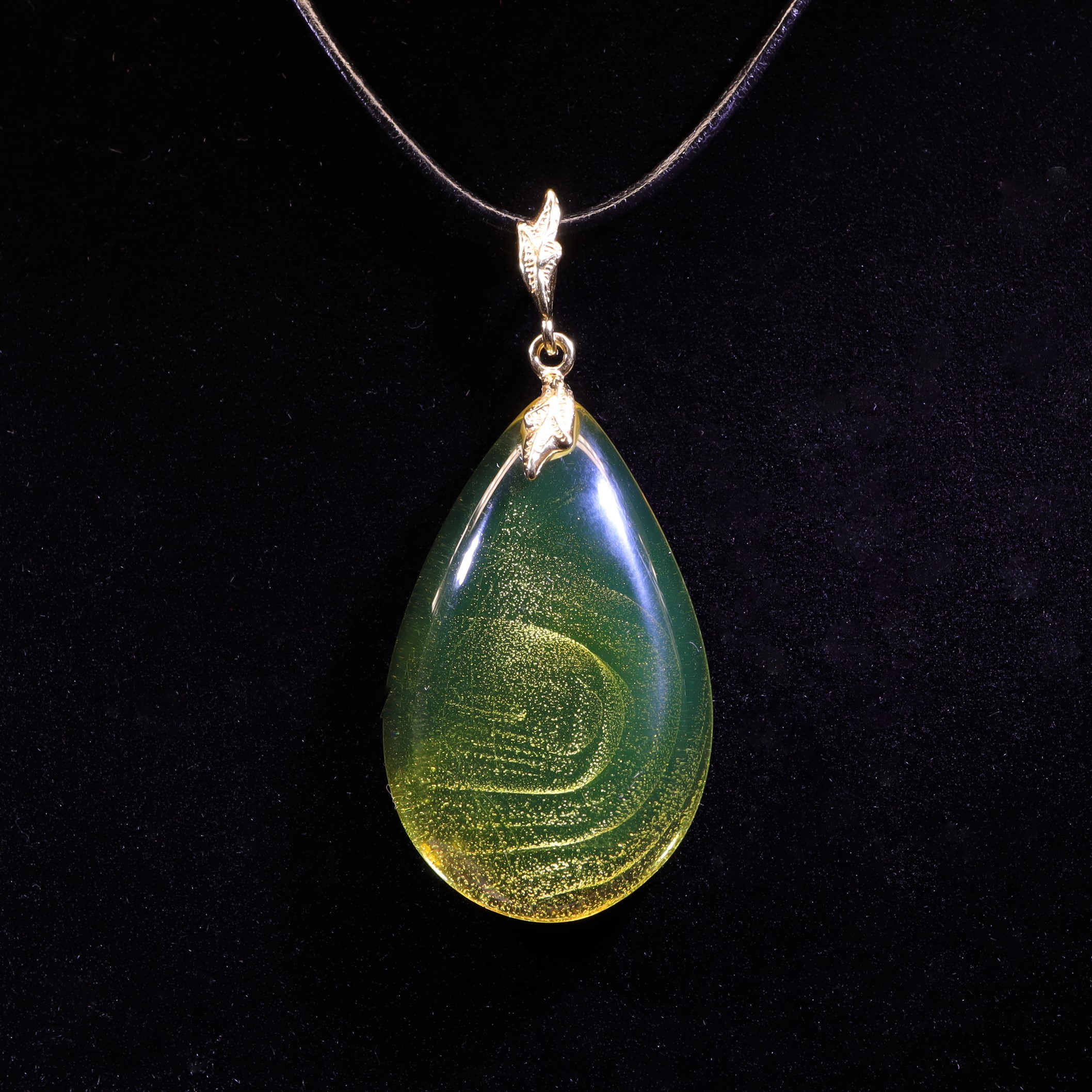
Photo: Dominican green amber, like Baltic amber, will form tiny bubbles under certain conditions. When intense light hits them, they light up like golden sand. In addition, they reveal the flow of the tree resin. It's like a secret message that only reveals itself at certain moments.

Photo: Dominican blue-green amber

Photo: This blue amber containes inclusions of organic origin, probably pollen from a plant.
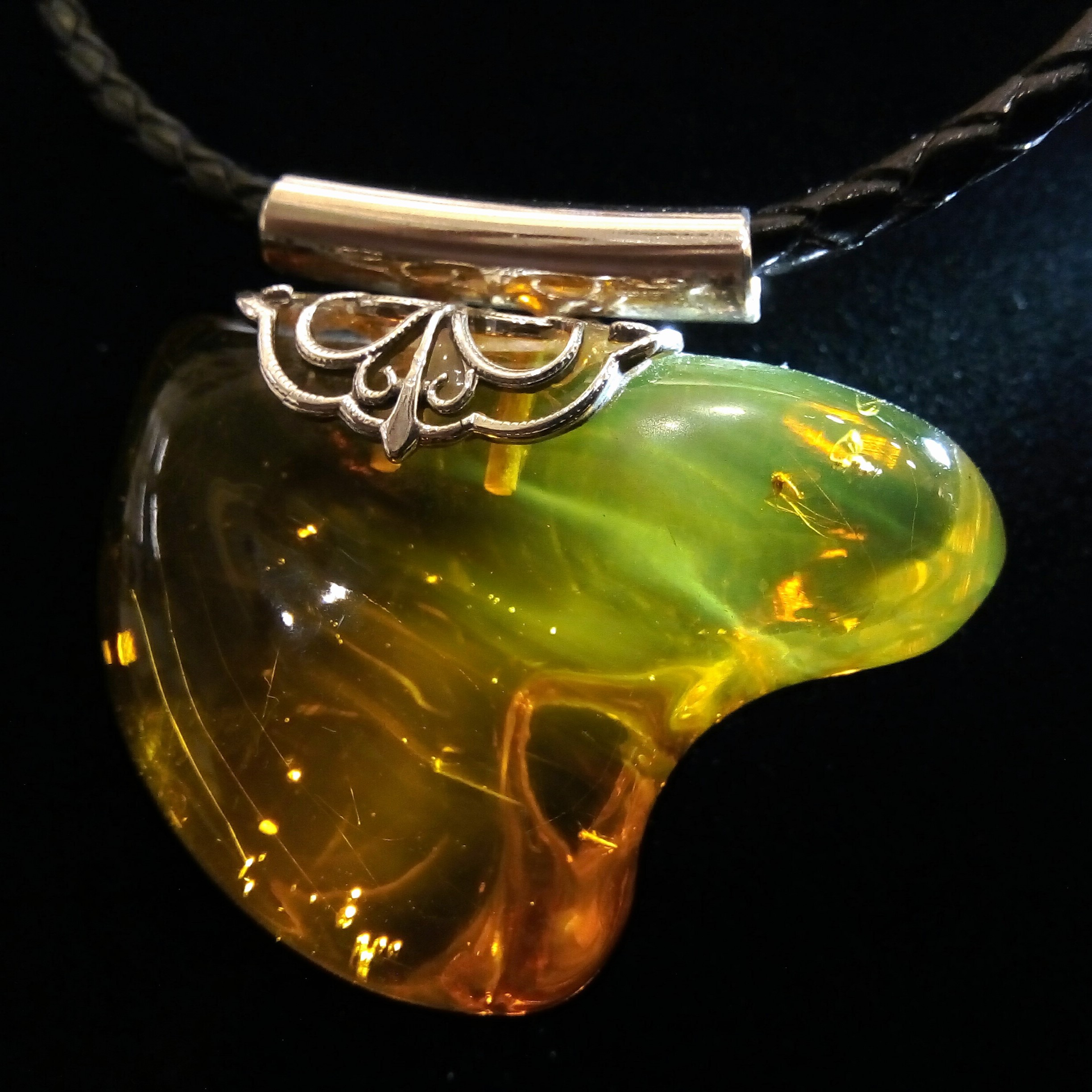
Photo: A small fly was preserved in this Dominican green amber pendant. Various insects are found relatively more frequently in green amber.
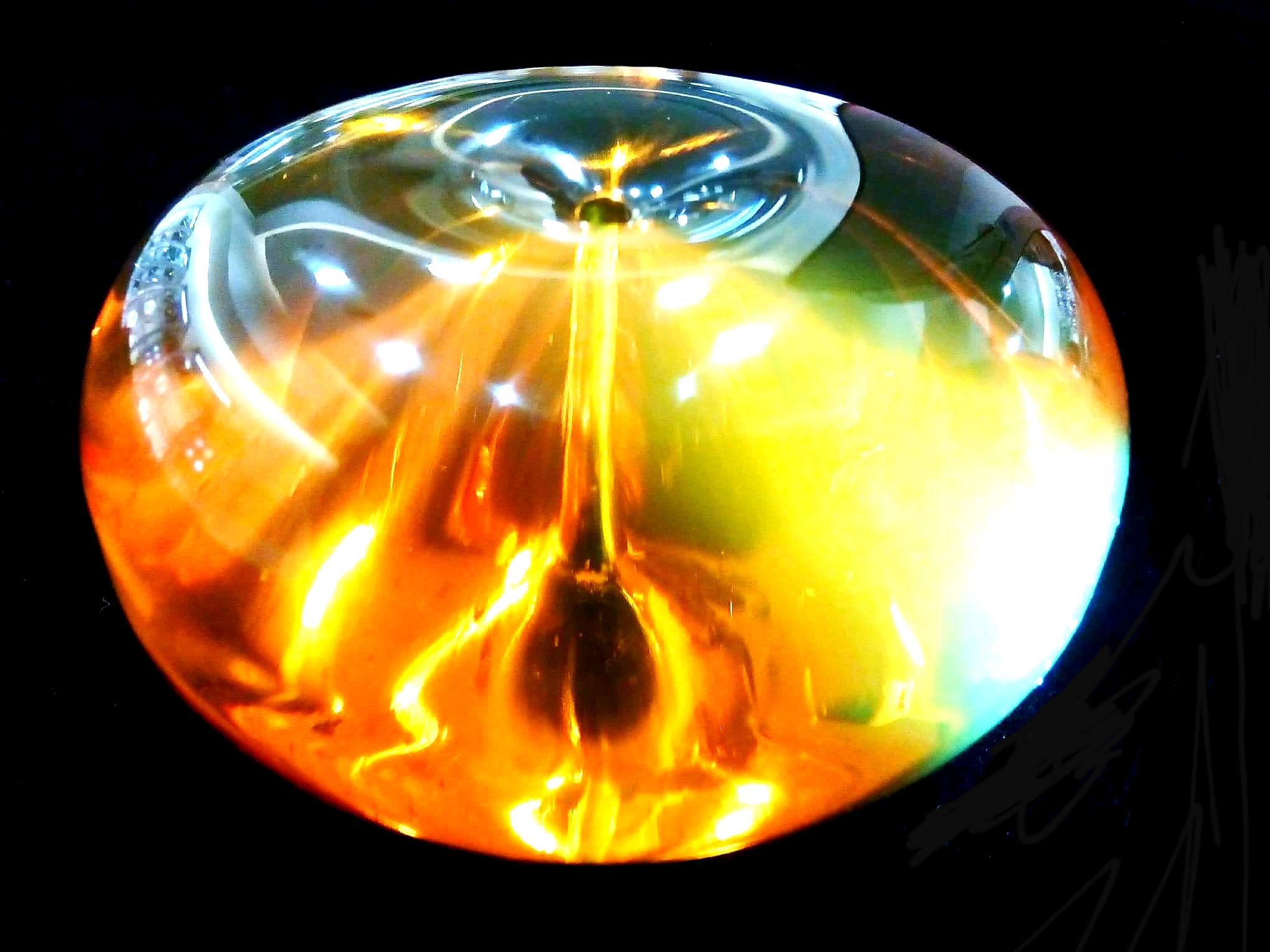
Photo: Amber likes to play with light, especially when cut into a donut shape.
